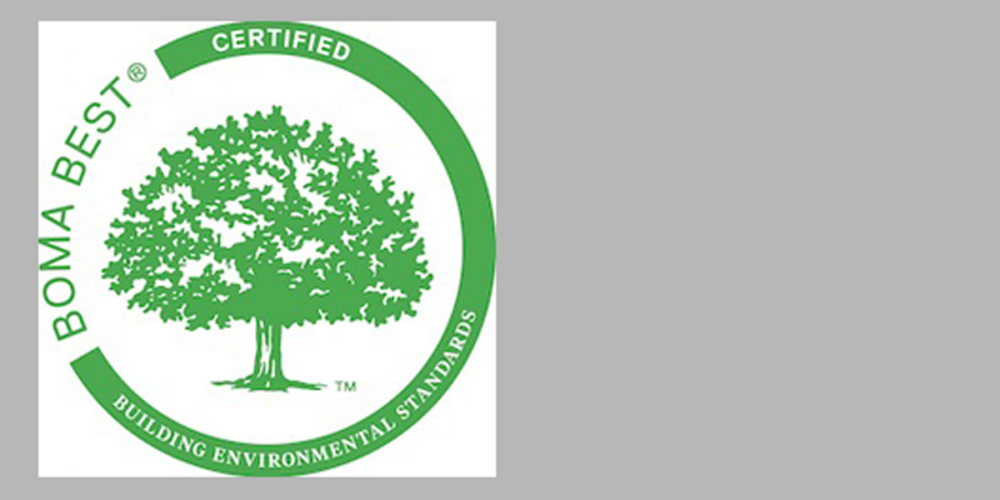Developers, builders and managers of commercial and industrial buildings today face many challenges in their search for environmentally sustainable solutions. Indeed, beyond a building’s simple functionality, architecture or comfort, its ecological impact and sustainability must be taken into consideration to protect the future of generations to come.
To promote the implementation of eco-responsible buildings, numerous programs have been launched, the best known of which, LEED certification, aims to recognize buildings with a reduced impact on the environment. But what is BOMA BEST certification?
BOMA BEST certification highlights excellence in environmental practices.
Since 2005, the national BOMA BEST (Building Environmental Standards) certification program has also sought to improve on conventional North American building standards by highlighting excellence in environmental practices and encouraging:
- Energy efficiency
- Drinking water conservation
- Multi-material recycling
- Sound management of construction waste and hazardous products
- Use of healthy, recycled products
- Indoor air quality
A CERTIFICATION OFFERING UNDENIABLE ADVANTAGES
BOMA BEST certified buildings have a clear advantage when it comes to attracting and retaining tenants, as they produce little waste and offer a healthy, comfortable environment for their occupants. Furthermore, the operating and maintenance costs of these green buildings are greatly reduced compared to conventional buildings, due to their increased overall efficiency. Not to mention your positive contribution to the planet, and the fact that green buildings are becoming increasingly attractive to buyers!
BOMA BEST VERSION 3.0
On September 21, 2016, BOMA BEST launched version 3.0, a robust new platform to replace version 2 (V2), which became unavailable to users on February 28, 2017.
How is BOMA BEST 3.0 superior to V2?
- The total number of BEST practices rose from 14 to around 20
- Primary categories increased from 6 (energy; water; waste reduction and site; emissions and effluents; indoor environment and environmental management system) to 10 (energy, water, air, comfort, health and well-being, purchasing, conservation, waste reduction, site, stakeholder engagement)
- Version 3.0 is offered on a much more dynamic and robust platform
- The new version 3.0 reflects current best practices, whereas V2 was based on 2010 and 2011 industry standards
- Users will be able to view multiple buildings, from all four corners of the country, in a single location
- Multiple users can work on the same building
- Users can create and export performance graphs and tables
- Integration with ENERGY STAR Portfolio Manager for energy and water benchmarking will eliminate double data entry
- Users will be able to generate administrative summaries, providing an overview of all buildings in their portfolio and their status
- Documentation supporting the answer to a question can be downloaded directly from the questionnaire
- Users will have access to the questionnaire throughout the building’s certification cycle, and even after certification has been granted. They will therefore be able to update the information in the questionnaire as improvements are made to the building. This will enable a better understanding of the positive impact of these changes on the building’s score.
WHAT TYPES OF BUILDINGS CAN BE CERTIFIED USING THE 3.0 PLATFORM?
- Offices
- Shopping centers
- Open retail
- Light industrial
- NEW: Universal, which includes sports complexes, convention centers, schools, laboratories, etc.
BAULNE IS PROUD TO BE A PARTNER OF BOMA, QUEBEC’S LARGEST COMMERCIAL REAL ESTATE COMMUNITY.























